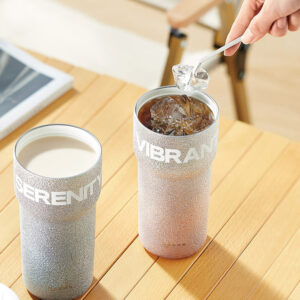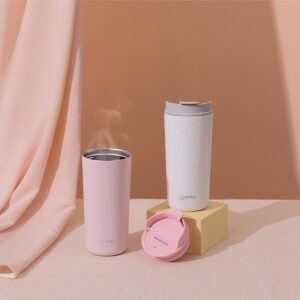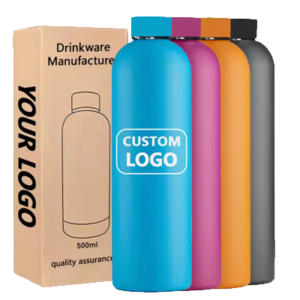What Affects the Insulation Efficiency of Your Vacuum Bottle
Vacuum bottle is a widely used container in daily life, valued for its ability to maintain the temperature of beverages. Its insulation performance directly impacts both our convenience and comfort. So, what factors influence the effectiveness of a vacuum bottle? Let’s explore its working principle and the key elements that affect its insulation.

Table of Contents
ToggleHow Do Vacuum Bottles Work?
The insulation in a vacuum bottle relies on a vacuum layer that minimizes heat transfer. These bottles typically consist of two layers of stainless steel with a vacuum in between. This vacuum layer is highly effective at preventing the transfer of heat between the inside and outside of the bottle, helping to keep beverages hot or cold for extended periods.
Global standards, such as ISO 20342:2020, outline methods for testing the thermal insulated stainless steel bottles. These standards ensure consistent evaluation, including how long a bottle can effectively retain temperature.
Factors That Influence Insulation Performance
Material of the vacuum Bottle: The type of material used significantly affects the insulation performance. Stainless steel bottles with a double-wall vacuum design are the most effective. Glass and ceramic bottles also provide insulation but are generally less efficient than stainless steel.

Sealing Performance: A well-sealed insulated bottle retains heat better. If the seal is loose or damaged, heat can escape, reducing its effectiveness. Checking the lid and sealing ring regularly is essential.
Bottle Capacity: Smaller bottles tend to have better insulation performance because the reduced surface area of the vacuum layer minimizes heat transfer. However, larger bottles may retain temperature longer due to their ability to store more heat initially.
Ambient Temperature: The environment where the vacuum bottle is used plays a role in its insulation. In colder settings, heat loss may accelerate, reducing the bottles’ ability to keep water warm. Conversely, a vacuum bottle in a moderate climate may retain heat for longer.
Usage Duration: Over time, an insulated bottle’s effectiveness may decline. This can happen as the vacuum layer’s density changes or due to gradual heat transfer through the material.
Cleanliness: Residue from tea, coffee, or other beverages can accumulate inside the bottle and affect its insulation performance. Regular cleaning with mild detergents or natural solutions like baking soda or vinegar helps maintain the bottle’s insulation.
Bottle Mouth Size: Bottles with narrower mouths typically retain heat better because they have a smaller surface area for heat exchange. However, wider openings make cleaning and drinking more convenient. When selecting a bottle, consider your preference for ease of use versus insulation efficiency.
Initial Temperature of Liquid: The starting temperature of the beverage affects how long the bottles can maintain it. Hotter liquids may lose heat faster initially, while beverages at a slightly lower starting temperature might sustain warmth longer.
Tips for Choosing Vacuum Bottles
When selecting a vacuum bottle, consider factors like material quality, sealing performance, and capacity. Look for reliable brands with clear specifications about insulation time. While international standards provide guidance, it’s always helpful to read product reviews and test results of the bottle.

For optimal performance, pre-warm or pre-cool your bottle before adding the beverage. Avoid using the bottle for highly acidic or salty drinks, as these can corrode the interior over time. Lastly, clean the bottle regularly to keep it hygienic and maintain its insulation properties.
The insulation performance of stainless steel bottles depends on a combination of factors, including its design, materials, and usage habits. By understanding these aspects and choosing a high-quality product, you can ensure your bottle meets your daily needs and provides reliable temperature retention. Proper maintenance and care will further extend its lifespan, making it a long-term companion for your hot or cold beverages.


